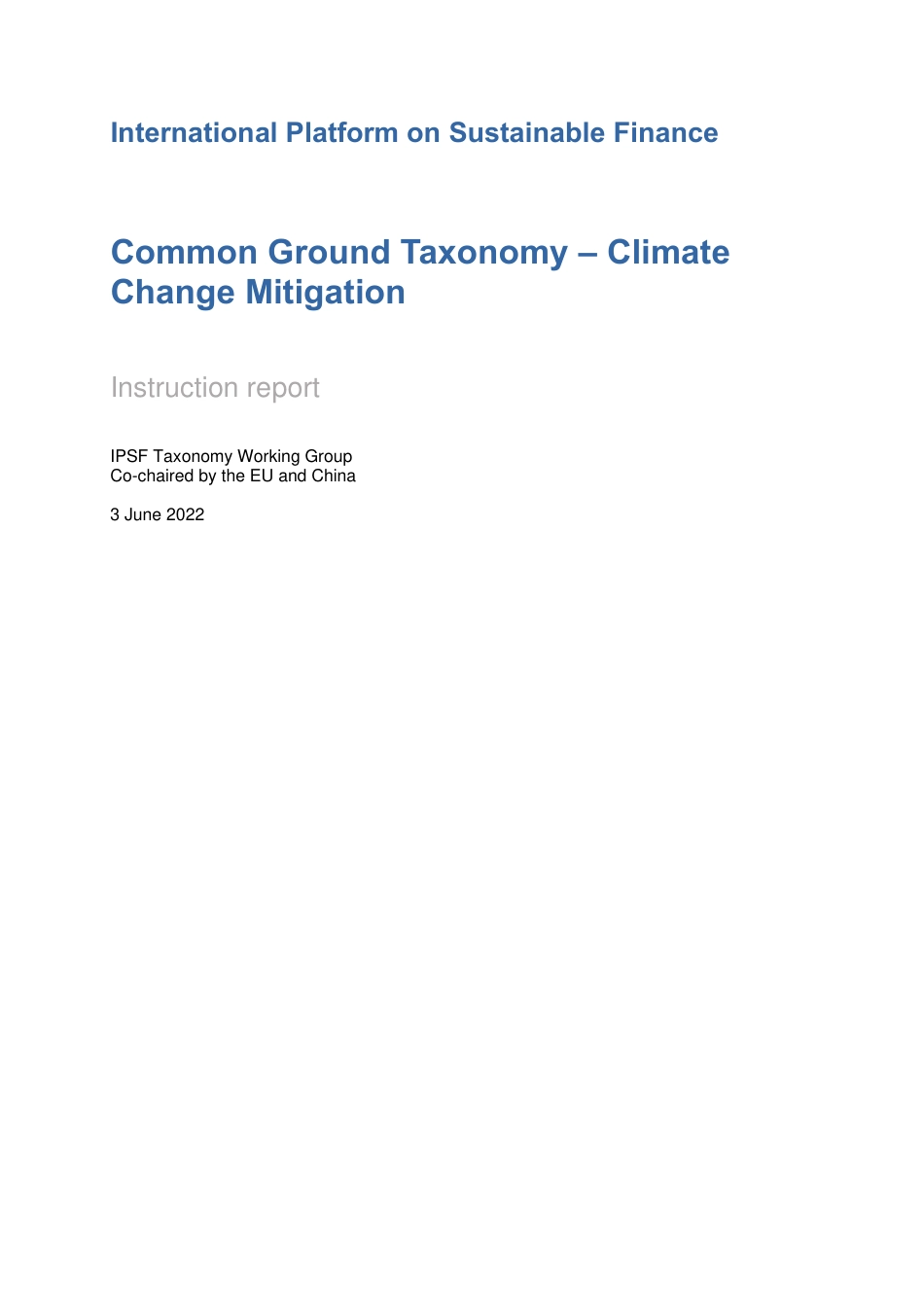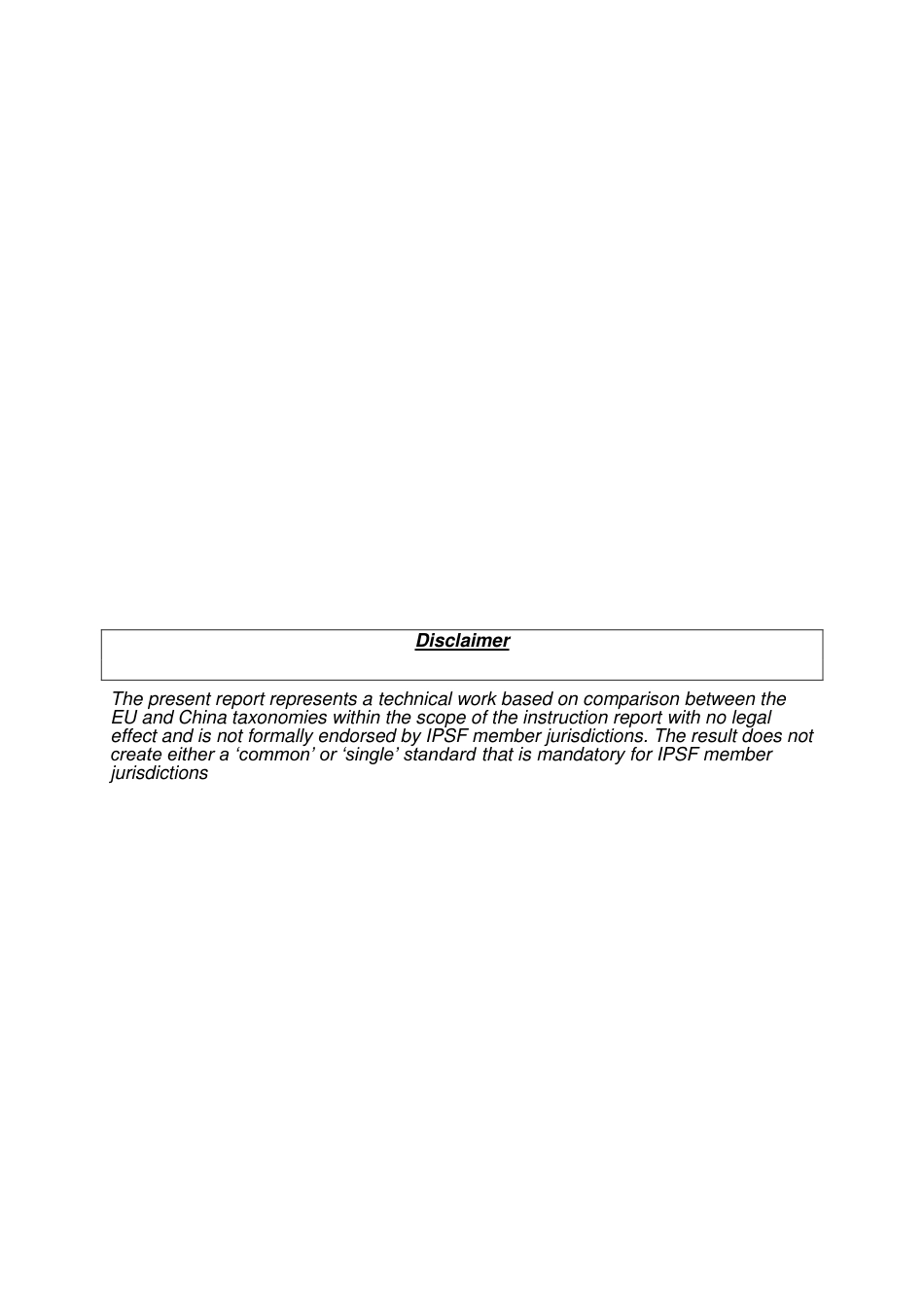International Platform on Sustainable Finance Common Ground Taxonomy – Climate Change Mitigation Instruction report IPSF Taxonomy Working Group Co-chaired by the EU and China 3 June 2022 Disclaimer The present report represents a technical work based on comparison between the EU and China taxonomies within the scope of the instruction report with no legal effect and is not formally endorsed by IPSF member jurisdictions. The result does not create either a ‘common’ or ‘single’ standard that is mandatory for IPSF member jurisdictions 3 Acknowledgements This report was produced by the IPSF Taxonomy Working Group, co-chaired by Mr Marcel Haag for the European Commission and Dr Ma Jun for the People’s Bank of China. It was written by the IPSF Technical Expert Group with valuable inputs by IPSF members and observers. The IPSF Secretariat is particularly grateful for the invaluable contributions of Sean Kidney, Bridget Boulle, and Wenhong Xie (Climate Bonds Initiative), Bolu Wang (Tsinghua National Institute of Financial Research), Xiaofeng Li (China Institute of Building Standard Design and Research), Wenqin Lu (China Energy Conservation and Environmental Protection Group), and Sibo Song (Lianhe Equator). . 4 Contents 1. Executive summary ............................................................................................. 6 2. Introduction .......................................................................................................... 9 2.1. Background and Objectives ......................................................................................... 9 2.1.1. Brief introduction of IPSF’s Taxonomy Work ............................................................................ 9 2.1.2. The Common Ground Taxonomy (CGT): purpose...



